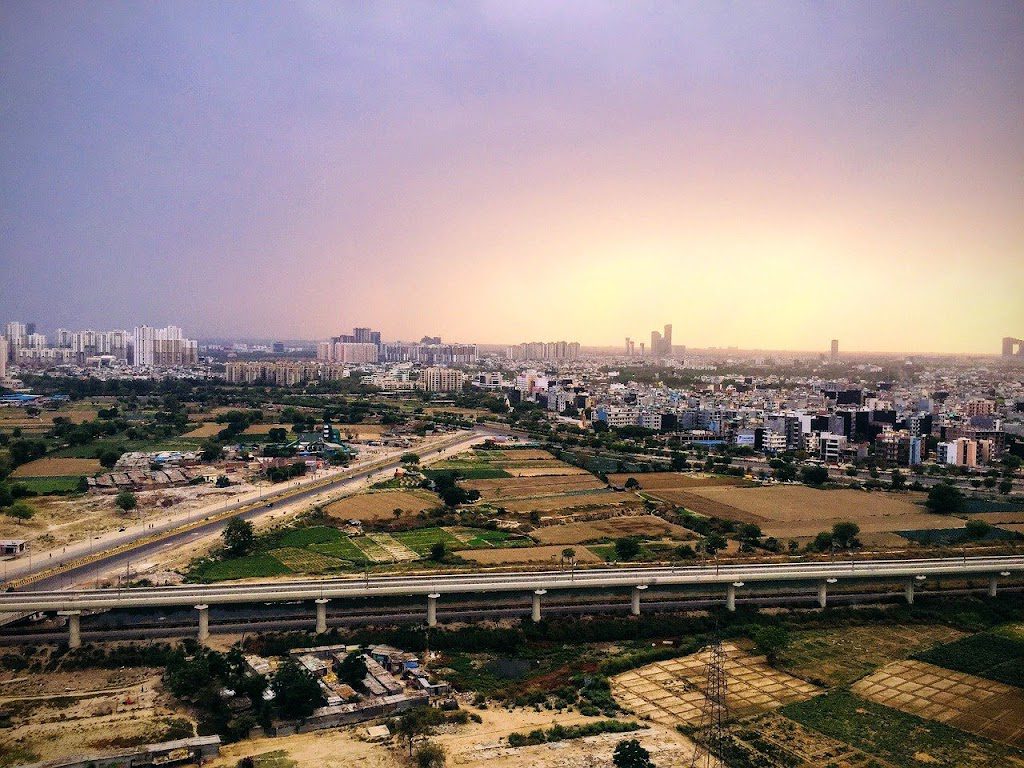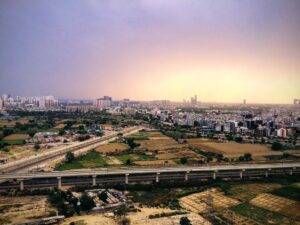Introduction to Noida
Here is Everything you need to know about Noida. From It’s History to how it is now so let’s get started.
Noida is widely recognized as one of Uttar Pradesh’s most important cities in northern India. The town was established on April 17, 1976, through the initiatives of Sanjay Gandhi and is widely recognized as Noida Day.
One of the country’s largest industrial towns, this industrial city is connected to Delhi via a variety of networks, including the Metro Rail and other road systems like the DND flyover and other national highways. It is located in the National Capital Region of India.
For those who are curious, Delhi Noida Direct Flyway is the full name of the DND flyway.
Why is it called Noida?
The full form of Noida is “New Okhla Development Authority” and is situated in the Indian state of Uttar Pradesh Gautam Budh Nagar District. The New Okhla Industrial Development Authority, or NOIDA, is in charge of overseeing this proposed city. A part of India’s National Capital Region, Noida is a satellite city of Delhi.
Location of Noida
Noida is located in Uttar Pradesh’s Gautam Budh Nagar district. Situated 14 miles from Connaught Place, New Delhi, the center of the Indian capital, this area is part of the capital region. The executive office is situated in the Greater Noida area. The town and the Princess Bagh area of Noida are connected by the 550-meter, eight-lane DND Toll that crosses the Yamuna River. Noida lies close to the NH-24 Bye-Pass in the north, the Hindon Stream in the east, and the Yamuna Stream in the west. The Hindon River and the Yamuna River link the town to the south.
History of Noida
The development of modern-day Noida town began in 1972 when the Uttar Pradesh government, aware of the increasing pressure from speculative land deals in this area, which was close to Delhi and had a backward development pattern, designated 50 villages in the former Bulandshahar district as the “Yamuna-Hindon-Delhi Border Regulated area” following the U.P. Regulation of Building Operations Act, 1958.
Although the newly designated Regulated Area’s regulating Authority took into consideration several development-related factors, they were unable to significantly contribute to the creation of a new urban center. To ensure the planned development of the area for industrial and related uses, the Uttar Pradesh government finally designated 36 villages of the “Yamuna-Hindon-Delhi Border Regulated Area” as New Okhla Industrial Development Area (NOIDA) on April 17, 1976.
It is thought that the father of Ravana was born in Noida. Both the Pandavas and the Kauravas trained at Guru Dronacharya’s ashram in Noida, according to the epic Mahabharata.
It was the urbanization rebellion that led to the establishment of Noida.
Courts
The District Court for Noida, Greater Noida is situated at District Court Complex, Surajpur, Greater Noida, Gautam Budh Nagar, Uttar Pradesh with 18 courts in function. Before 1997 the Court was situated at Ghaziabad afterward the Court of Gautam Budh Nagar was formed in the year 1997 at Phase II, Noida which was later in 2012 got transferred to a new Building at Surajpur, greater Noida, Gautam Budh Nagar.
Connectivity in Noida
Metro in Noida
Noida offers excellent underground real estate. Although it was supposed to open in Noida by 2011, it did so on November 12, 2009—ten months ahead of schedule and the Commonwealth Games. It has excellent underground access to Noida. Right now, the Blue Line underground connects it to Connaught Place, Dwarka Subtown, and the Indian capital. Another underground route that connects Sector-51 in Noida and the GNIDA headquarters in Greater Noida is called the Turquoise Route. It is now in use.
Roads in Noida
Noida offers sensible road properties in the Delhi NCR and many cities of Uttar Pradesh. Since Noida is a planned town, all major roads are four lanes wide, arrow-straight, and well-finished. The DND migration route, the Noida-Greater Noida state highway, and the Yamuna state highway are its three primary motorways. The Yamuna state highway links larger Noida to Agra via Mathura, while the DND migration route links Noida, Delhi, and Noida.
Conclusion
Noida, a major industrial town in Uttar Pradesh, was established on April 17, 1976, by Sanjay Gandhi. It is connected to Delhi via various networks, including the Metro Rail and DND flyover. The city is part of India’s National Capital Region and is a satellite city of Delhi.
The development of modern-day Noida began in 1972 when the Uttar Pradesh government designated 50 villages in the former Bulandshahar district as the “Yamuna-Hindon-Delhi Border Regulated area” as New Okhla Industrial Development Area (NOIDA). The city is connected to Delhi via the 550-meter, eight-lane DND Toll that crosses the Yamuna River.
The city is believed to be the birthplace of Ravana and the training ground for Pandavas and Kauravas in Guru Dronacharya’s ashram. Noida offers excellent underground real estate, with the Blue Line and Turquoise Route connecting it to Connaught Place, Dwarka Subtown, and the Indian capital. Its major roads are four lanes wide, arrow-straight, and well-finished.

Rohit Kumar is a seasoned digital marketer with over 3 years of experience specializing in SEO and content strategy. He is the founder of Noida Wale, a growing travel blog inspired by his love for discovering local culture, food, and offbeat destinations across India, sharing insights to help fellow travelers explore authentically.


